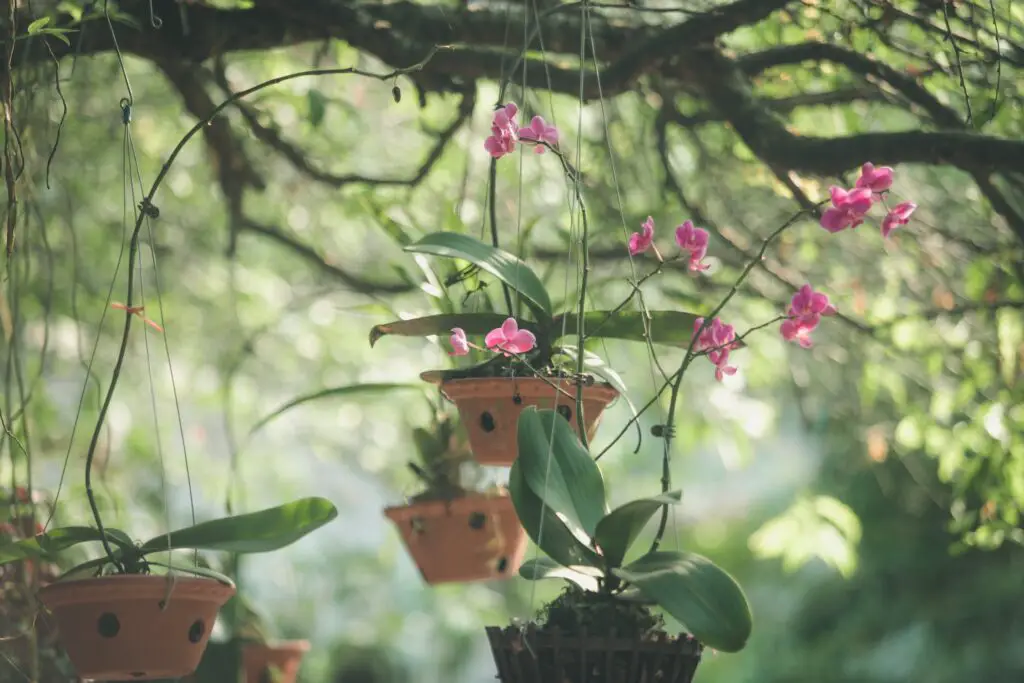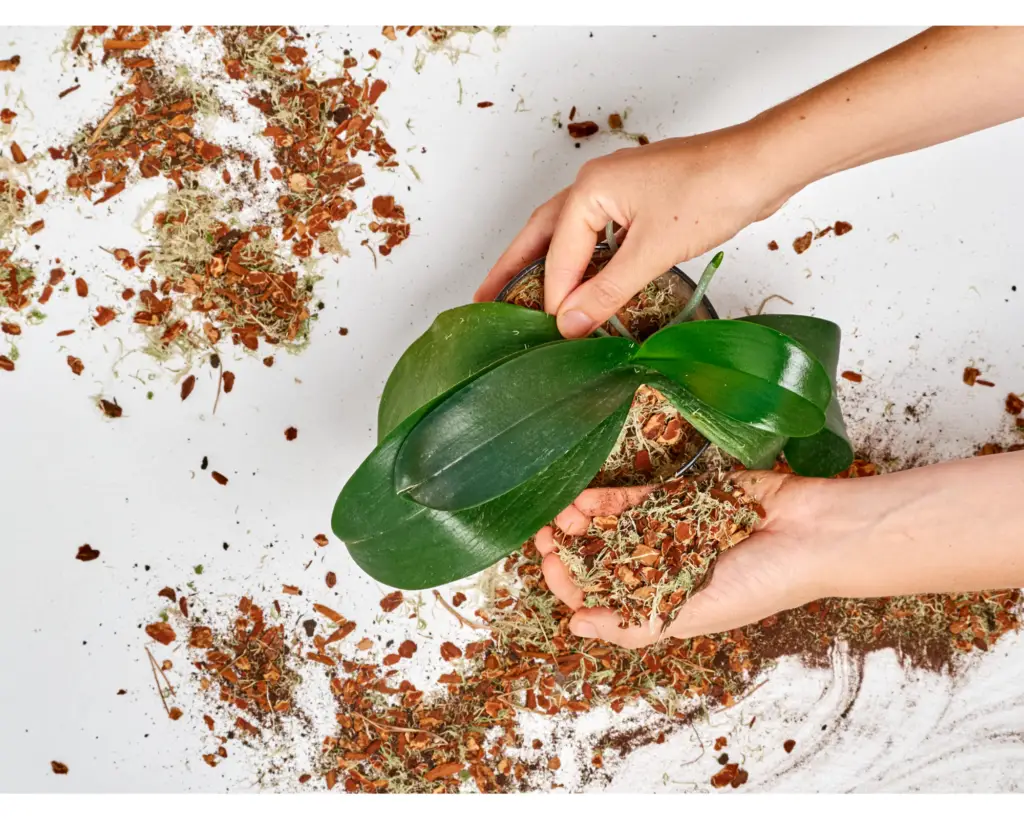Orchids are exquisite and captivating flowers that have been cherished for centuries. Known for their vibrant colours, intricate shapes, and alluring fragrances, orchids make for a stunning addition to any indoor space. While often associated with tropical climates, many orchid species can thrive indoors with proper care and attention. In this article, we will explore the diverse world of orchids and highlight some of the best types to grow indoors.

Table of Contents
Selecting the types of Orchids
Growing orchids indoors offers a rewarding experience, allowing you to enjoy the beauty of these exquisite flowers year-round. With the right care and attention, a wide variety of orchid species can thrive indoors, adding elegance and charm to any living space.
When selecting orchids for indoor cultivation, it’s essential to consider the specific needs of each species. While some orchids, like Phalaenopsis and Paphiopedilum, are more forgiving and adaptable to indoor conditions, others, such as Vanda and Dendrobium, require more precise environmental conditions and may be better suited for experienced growers.
Phalaenopsis Orchids (Phalaenopsis spp.)
Phalaenopsis orchids, also known as moth orchids, are among the most popular orchids for indoor cultivation. They are renowned for their elegant arching sprays of flowers that come in a wide range of colours, including white, pink, purple, and yellow. Phalaenopsis orchids are relatively low maintenance and adapt well to indoor conditions, making them an ideal choice for beginners.
Cattleya Orchids (Cattleya spp.)
Cattleya orchids are highly regarded for their large, showy blooms and delightful fragrance. These orchids are famous for their vibrant colours, such as purple, pink, and white, and their intricate, often ruffled petals. While Cattleyas require a bit more attention than some other orchid species, they reward dedicated growers with spectacular flowers that make a striking statement indoors.
Dendrobium Orchids (Dendrobium spp.)
Dendrobium orchids are a diverse group of orchids that includes both epiphytic and terrestrial species. They come in a wide variety of shapes, sizes, and colours, ranging from small and delicate to large and showy. Dendrobiums generally prefer brighter light conditions and slightly cooler temperatures, making them suitable for indoor cultivation in certain climates or with the use of artificial lighting.
Oncidium Orchids (Oncidium spp.)
Oncidium orchids, commonly known as dancing lady orchids, are beloved for their profusion of small, vibrant flowers resembling dancing figures. These orchids are often seen in shades of yellow, brown, and red, with intricate patterns on their petals. Oncidiums are relatively easy to grow indoors, requiring moderate light and regular watering to thrive.
Miltonia Orchids (Miltonia spp.)
Miltonia orchids, also called pansy orchids, are known for their charming, pansy-like flowers and their delightful fragrance. These orchids come in various colours, including white, pink, purple, and yellow, often with contrasting markings or patterns. Miltonias prefer slightly cooler temperatures and moderate light levels, making them well-suited for indoor cultivation.
Paphiopedilum Orchids (Paphiopedilum spp.)
Paphiopedilum orchids, commonly known as slipper orchids, feature unique and extraordinary flowers with a pouch-like structure. They come in an array of colours, including shades of green, brown, pink, and yellow, often with intricate patterns and markings. Paphiopedilums thrive in moderate to low light conditions, making them suitable for indoor environments with indirect light.
Vanda Orchids (Vanda spp.)
Vanda orchids are striking plants known for their vibrant colours and long-lasting flowers. These orchids produce large, flat blooms that can be blue, purple, orange, or yellow. Vandas require bright, indirect light and high humidity to flourish indoors, making them better suited for experienced orchid enthusiasts who can provide the necessary growing conditions.
Care and Maintenance requirements
Watering and humidity
In addition to understanding the lighting and temperature requirements of different orchid species, it’s crucial to provide proper watering and humidity levels. Most orchids prefer a well-draining growing medium, such as orchid bark or sphagnum moss, and should be watered thoroughly when the potting mix starts to dry out. It’s important to avoid overwatering, as this can lead to root rot and other issues.
Humidity is another critical factor for indoor orchid cultivation. Many orchids, especially those native to tropical regions, require higher humidity levels. To create a suitable environment, you can use a humidifier or place orchids on humidity trays filled with water and pebbles. Misting the leaves occasionally can also help increase humidity around the plants.
Fertilisation
Fertilising orchids is necessary to provide them with essential nutrients. It’s recommended to use a balanced orchid fertilizer at half the recommended strength and apply it regularly during the active growing season. However, it’s important to follow the specific fertilisation guidelines for each orchid species, as their nutritional requirements may vary.
Potting and repotting
Proper potting and repotting are also crucial for the health of indoor orchids. Most orchids prefer to grow in pots with excellent drainage, allowing air to circulate around the roots. As orchids grow, they may outgrow their pots, requiring repotting into a slightly larger container or dividing into multiple plants. Repotting should be done during the dormant period or after flowering.
Pest control
In terms of pest control, orchids are generally resistant to many common indoor plant pests. However, occasional infestations of aphids, scale insects, or spider mites may occur. It’s important to monitor your orchids regularly and address any pest issues promptly with appropriate organic or chemical treatments.
Lastly, it’s essential to appreciate the beauty of orchids and enjoy the process of growing them. Each species has its unique characteristics and charm. Whether you prefer the graceful elegance of Phalaenopsis, the flamboyant blooms of Cattleya, or the delicate fragrance of Miltonia, there is an orchid species to suit every taste and skill level.
Conclusion
Growing orchids indoors is a delightful and rewarding endeavor. By understanding the specific requirements of different orchid species and providing them with the necessary care, you can create a thriving indoor orchid collection. Whether you are a beginner or an experienced gardener, the diverse world of orchids offers endless possibilities for creating a stunning display of beauty in your home or office. So, why not embark on this enchanting journey and bring the allure of orchids into your indoor space?


